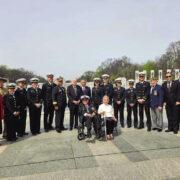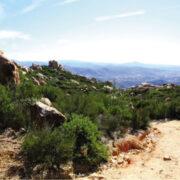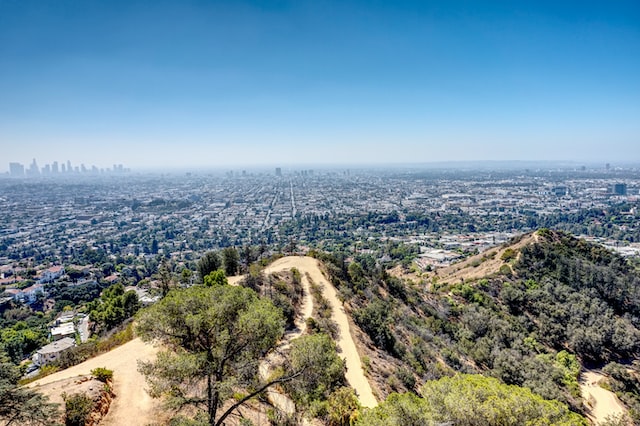The Los Angeles County Health Officer has extended a heat warning as high temperatures have been forecast for the coming week.
The areas include Downtown LA, LA County, Santa Clarita, San Fernando Valley, San Gabriel Valley, Santa Monica Mountains, LA County Beaches, Malibu Coast and Antelope Valley.
“While it is very important that everyone take special care of themselves, it is equally important that we reach out and check on others, in particular those who are especially vulnerable to the harmful effects of high temperatures, including children, the elderly, and their pets,” said Muntu Davis, MD, MPH, Los Angeles County Health Officer.
The Los Angeles County Department of Public Health is reminding everyone to take precautions to avoid heat-related illness. Extreme heat poses a substantial health risk, especially for young children, the elderly, people with chronic diseases, pregnant individuals, people with disabilities, and people who are socially isolated who may be especially sensitive to negative health impacts from extreme heat.
Here are simple steps but important steps to stay safe:
Stay cool:
Those lacking air conditioning should go to a cooling center, library or public place such as a shopping mall to cool off for a few hours each day.
Electric fans may provide comfort, but when the temperature is in the high 90s, they will not prevent heat-related illnesses.
Taking a cool shower or bath or moving to an air-conditioned place is a much better way to cool off. Additionally cool compresses may provide relief.
Use your stove and oven less to maintain a cooler temperature in your home.
If spending time outdoors, avoid physical exertion or exercising outdoors during the hottest parts of the day to avoid overheating. Get medical attention if you experience a rapid, strong pulse, feel delirious, or have a body temperature above 102 degrees Fahrenheit.
Reduce exposure to the sun from 10 a.m. to 4 p.m. when UV rays are strongest and keep physical activities to a minimum during that time.
Use cool compresses or misting.
When working outside, drink plenty of fluids even if you are not thirsty and take rest breaks in the shade.
Wear a wide-brimmed hat to cover the face and neck and wear loose-fitting clothing to keep cool and to protect your skin from the sun and mosquitoes.
Wear sunglasses that provide 100 percent UVA and UVB protection. Chronic exposure to the sun can cause cataracts, which left untreated, can lead to blindness.
Liberally apply sunscreen (at least SPF 15) 15 minutes before venturing outdoors and re-apply at least every two hours – sunscreen may reduce the risk of skin cancer, the number one cancer affecting Californians. Sunscreen may also prevent premature aging.
Stay hydrated:
Drink plenty of water or fluids and keep hydrated throughout the day. Drink more fluids, regardless of how active you are. Don’t wait until you’re thirsty to drink.
Warning: If your doctor limits the amount you drink or has you on water pills, ask how much you should drink while the weather is hot.
Stay away from very sugary or alcoholic drinks—these cause you to lose more body fluid. Also avoid very cold drinks because they can cause stomach cramps.
Replace salt and minerals: heavy sweating removes salt and minerals from the body that need to be replaced. A sports drink can replace the salt and minerals you lose in sweat.
If you are on a low-salt diet, have diabetes, high blood pressure, or other chronic conditions, talk with your doctor before drinking a sports beverage or taking salt tablets.
Keep your pets hydrated: provide plenty of fresh water for your pets and leave the water in a shady area.
Heat-related illnesses
Heat-related illness can be one or more of the following medical conditions including: heat rash, heat cramps, fainting, heat exhaustion, and heat stroke, which can lead to death. Warning signs of heat-related illness vary and may include heavy sweating, muscle cramps, weakness, headache, nausea or vomiting, paleness, tiredness, dizziness, or disorientation or confusion.
Heat Cramps. Signs of heat cramps include muscle pains and spasms triggered by heavy activity. They usually involve the stomach muscles or the legs. If a person has heat cramps:
Stop physical activity and move to a cool place.
Drink water or a sports drink.
Wait for cramps to go away before you do any more physical activity.
Get medical help right away if: cramps last longer than 1 hour; someone is on a low-sodium diet; or someone has heart problems.
Heat Exhaustion. Warning signs include heavy sweating, cramps, headache, nausea or vomiting, tiredness, weakness, dizziness, and fainting. If a person has heat exhaustion:
Move to a cool place.
Rest, lying down.
Loosen clothes.
Put cool, wet cloths on body (head, neck, armpits, and groin) or take a cool shower or bath.
Sip cool, nonalcoholic beverages water.
Get medical help right away if someone is throwing up; symptoms get worse; or symptoms last longer than 1 hour.
Heat Stroke. Heat stroke is a medical emergency. Warning signs of heat stroke include red, hot, dry skin; very high body temperature; dizziness; nausea; confusion, strange behavior, or unconsciousness; rapid pulse or throbbing headache. If a person has heat stroke:
Call 9-1-1 right away.
Move the person to a cooler or shady place.
Help lower the person’s temperature with cool wet cloths on head, neck, armpits and groin or a cool bath.
Do not give the person anything to drink.
Public Health offers the additional recommendations during high temperature days:
Cars get very hot inside, even if the windows are ‘cracked’ or open. NEVER leave an infant, child, or pet in a car – it can take as little as 10 minutes for the temperature inside a car to rise to levels that can kill. Call 911 if you see a child or pet in a car alone.
Check on family, friends and neighbors who are at risk for heat-related illness, like those who are sick or have chronic conditions, older adults, pregnant women, children, those who live alone, pets, and outdoor workers and athletes. Call 911 right away if you see these symptoms: high body temperature (103°F or higher), vomiting, dizziness, confusion, and hot, red, dry, or damp skin. Heat stroke is a medical emergency.
If you are wearing a mask, avoid strenuous workouts wearing face coverings or masks not intended for athletic purposes.
Visit your power company’s website or contact them by phone to determine if you are scheduled for a rolling power outage.
Stay informed
Check for Updates: Check your local news for weather forecasts, extreme heat alerts, and safety tips, and to learn about any cooling centers in your area.
County and City partners have planned ways to safely operate cooling centers during times of high heat. Residents who do not have access to air conditioning are encouraged to take advantage of these free cooling centers. To find a location near you, visit https://ready.lacounty.gov/heat/ or call 211.
The health and safety of staff and visitors at cooling centers is priority. Public Health notes the following for cooling centers:
Staff and visitors are instructed to stay home if they do not feel well. Any person reporting or exhibiting signs of illness is advised to seek appropriate medical care.
Staff and visitors are required to wear a face covering inside cooling centers, regardless of COVID-19 vaccination status.
Los Angeles County residents and business owners, including people with disabilities and others with access and functional needs can call 2-1-1 for emergency preparedness information and other referral services. The toll-free 2-1-1 number is available 24 hours a day, seven days a week. 211 LA County services can also be accessed by visiting 211la.org. n









